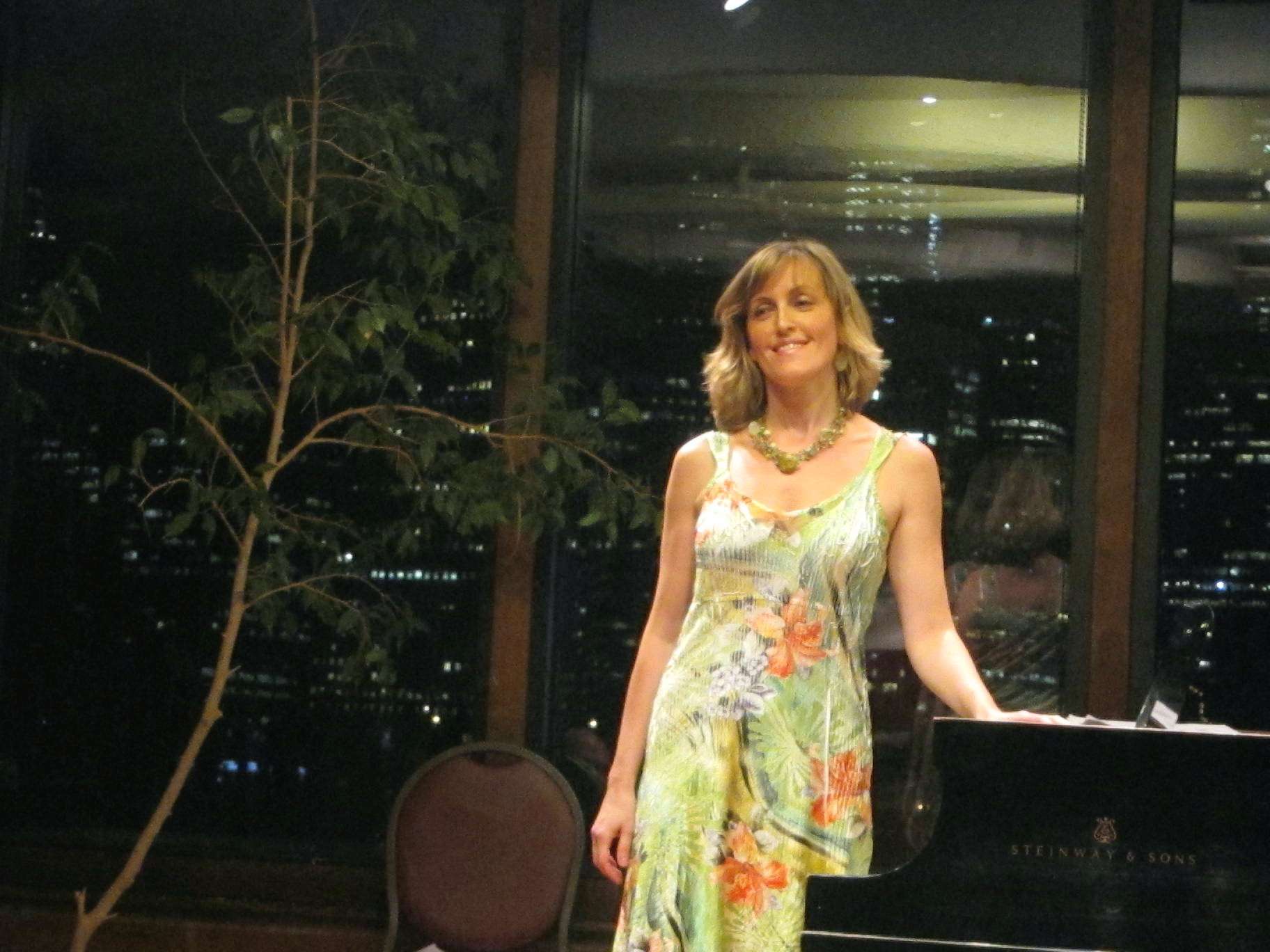|
Back
An American Grabbag New York
BargeMusic, Old Fulton Street, Brooklyn
08/08/2012 -
Here and Now Series
Scott Wheeler: Portraits and Tributes: a. Crowley Meditation; b. Cookie Galop with Waltz; c. Portrait of Shane Crabtree
Laura Kaminsky: Danza Piccola: a. Viaggio Piccola e Maestoso; b. Musica Esotica; c. Musica Stellato
George Crumb: Excerpts from Makrokosmos, Volume I: a. Primeval Sounds; b. Proteus; c. Pastorale; d. Music of Shadows; e. Spring Fire; f. Dreams Images
Victoria Bond: Rage
John Adams: China Gates
Aaron Copland: Scherzo Humoristique: “The Cat and the Mouse”
Earl Wild: Virtuoso Etudes on George Gershwin’s “The Man I Love” and “I Got Rhythm”
Olga Vinokur (Pianist)

O. Vinokur (© Coco T. Dawg)
How fitting that the Russian born, Israeli trained Olga Vinokur should devote her BargeMusic recital last night to the diversity of American music? But why not? She has become such an international near-celebrity over the past few years, from China to her native Russia to America, that she seems to take every region and century in her digital stride.
Last night, the diversity was fairly encompassing. She didn’t essay anything atonal from the Babbitt school, but she played the first two relatively unknown composers, Scott Wheeler and the rhythmic Laura Kaminsky with color, excitement and commitment.
But the center of the program was easily the most memorable part of the recital. At an all-Crumb concert last year showed, this West Virginian is the only living serious composer who–in the tradition of Ives and Partch–is his own man, takes no nonsense, writes exactly what he wants to write, and makes music a wide-ranging circus, a freak show, a thaumaturgical oratory.
And oh! How I would love to have had Ms. Vinokur play the entire three volumes of George Crumb’s Makrokosmos. Only the most errant cad would say that Crumb’s piano “effects” had come from Cowell or Cage. Only a critical blackguard would say, “Oh, he is so literal. His Pisces notes swim around like fish, the Chopin quotes from Dream Images are cheating.”
The truth is that all the piano effects–the Aeolian winds, the silent note clusters, the fingernail pizzicati–have the effect which George Crumb needs. Ms. Vinokur handled the effects with as much aplomb as any pianist could, considering that half the time she had to peer and play around the inside of a keyboard like a plumber observing an overflowing toilet.
Perhaps it was even unfair to place Crumb in a recital of other works. Not that he is the most outstanding composer in America (a silly plaudit), but that he is so unfailingly interesting that everything else seems like...well, like piano music.

V. Bond (© Coco T. Dawg)
Yet there was more on this most diverse program. Two pieces were short, trenchant and dramatic. The serious drama was a pas de deux from a ballet by composer-conductor Victoria Bond, who was in the audience. This was no love affair, but a raging argument between an aggressive (and pianistically vicious) male and the obviously bullied female. For the only time, Ms. Vinokur displayed her Slavic roots for the male figure could have come from a Prokofiev sonata.
The second deathly struggle was à la Tom and Jerry. The Cat and the Mouse was Aaron Copland’s very first published piece, composed two decades before tbe cartoon, in 1920. Highly difficult for the fingers, it was played flawlessly by Ms. Vinokur.
I had reservations–one of them admittedly personal–about two other works. John Adams’ China Gates, when performed with perfect balance, has a series of invisible segues between different modes and different textures. Like the Copland, this too was one of the composer’s earliest works. At its best, it resembles a series of aural translucent curtains emerging, vaporizing, re-emerging, changing colors without us even noticing. It is classic magic misdirection.
Ms. Vinokur was technically adept, but those low pedal points, which are almost anchors to the changes of notes, were delayed for a microsecond, becoming almost dominant. It had the subtleties of expansion, but in that undercurrent of volition one was deprived of the sheer perfect balancer, that Adams transparency.
She also tried hard–very hard–for Earl Wild’s unfathomably brilliant Gershwin études. Mr. Wild lived much of his nonagenarian-plus life with jazz, and his own performances were so utterly spontaneous that nobody could ever compete with them. Mr. Vinokur tried, and was correct. But they were played as études. Perhaps only Mr. Wild could coalesce sheer virtuosity and sheer Gershwin. The attempt, though, was admirable, from this most admirable and adventurous artist.
Harry Rolnick
|